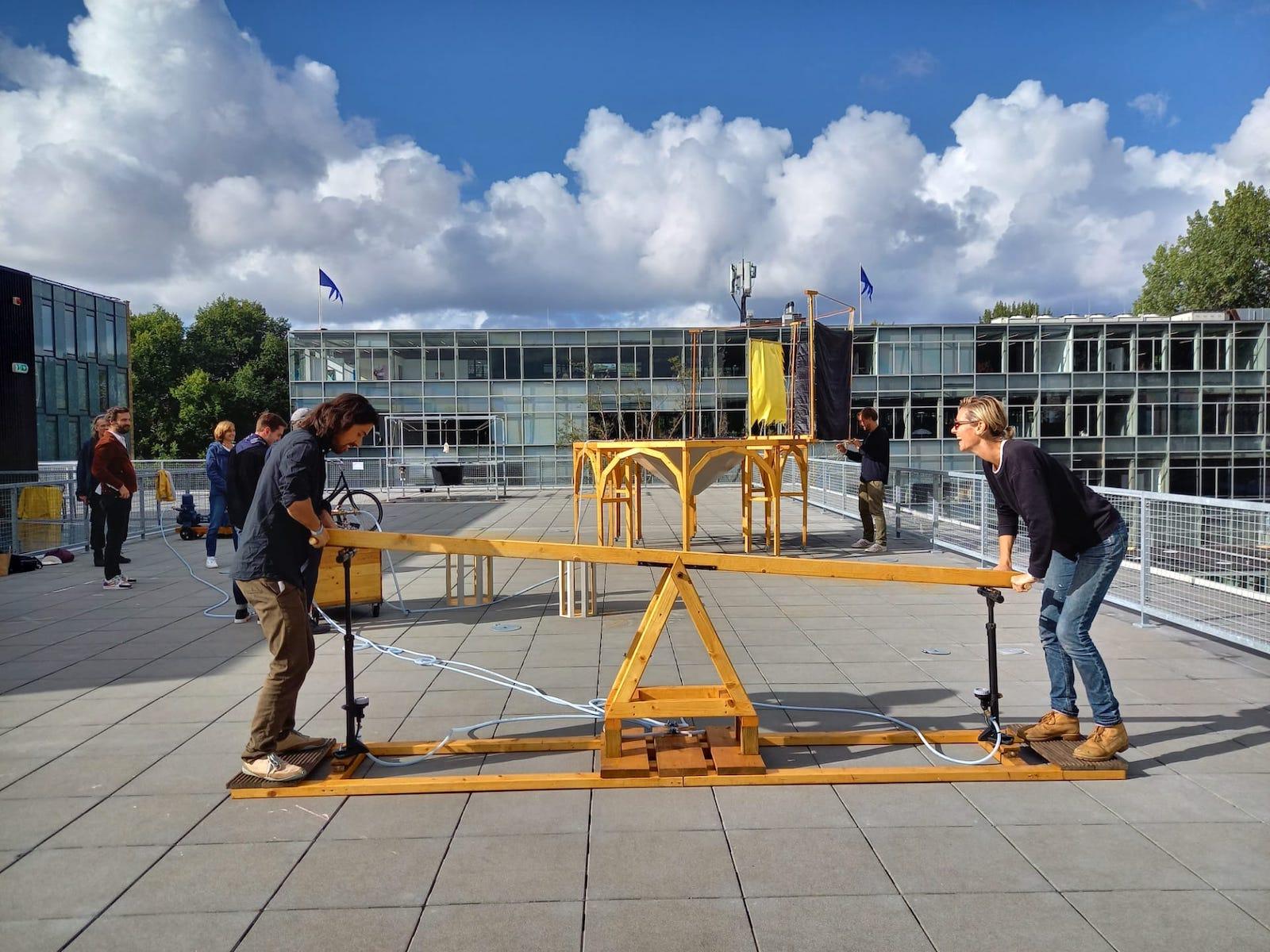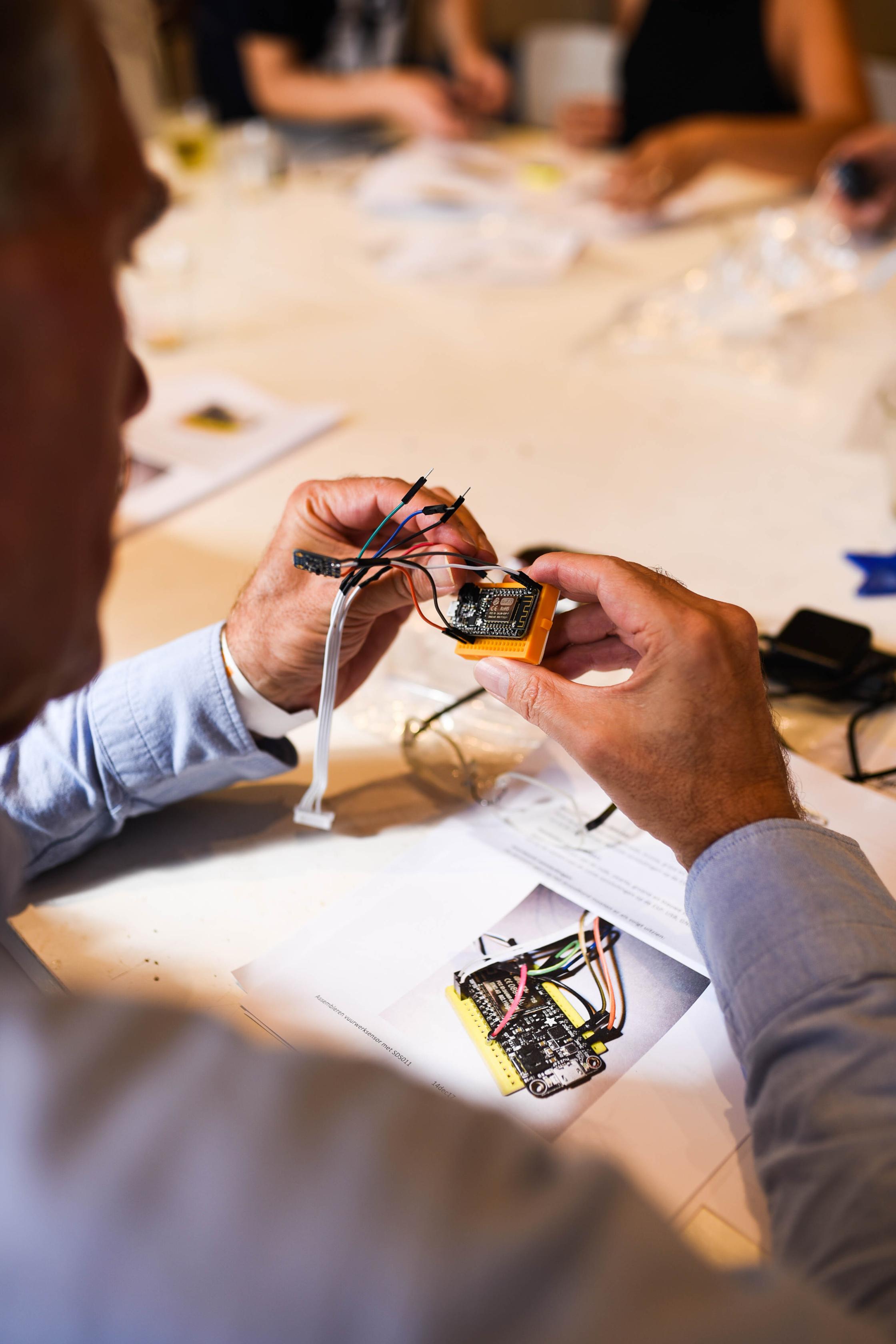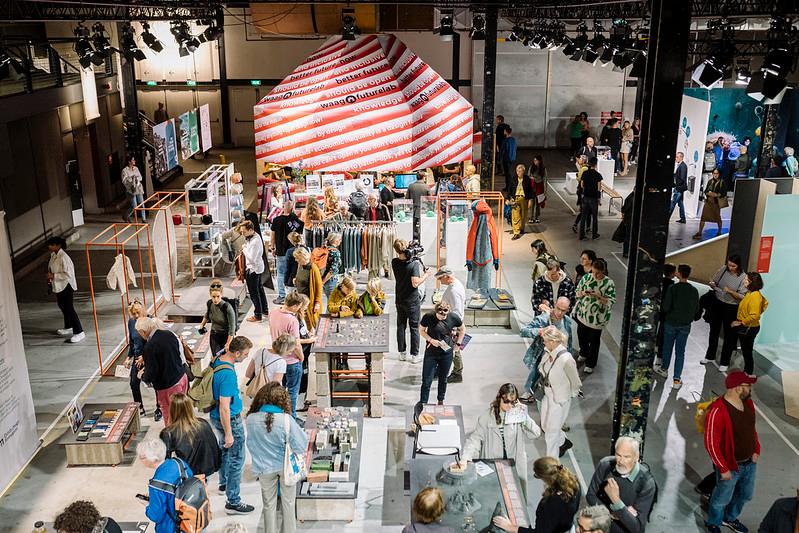Margherita Soldati interviewed Bea Vancaillie, our new artist in residence. Within the Open Next project, Bea is researching how to use wood waste from the Fiction Factory workshop in a circular manner, while developing a product following the principles of open source hardware.
Hi Bea, tell us who you are!
I am an artist/designer who creates works that aim to change people’s perspectives towards the environment and lead them towards embracing a more sustainable future. The installations and sculptures that I create are made mainly with waste and objects collected in my surroundings. Throughout the creative process, I often involve people and local communities, since I believe that active interaction is an effective way to change people’s perspectives and to facilitate the growth of shared values and creative interaction.
What is your role in Open Future Factory?
Since the beginning of November, I am the creative maker in residence at Fiction Factory (FF) joining the pilot that, together with Waag, is part of the European project ‘Open Next’. In a few words, my role is to investigate, together with experts from FF and Waag, the wood waste streams of FF and transform the waste into an open-source product. And at the same time, to ensure the engagement of a community of stakeholders gathered around a shared concern and values.

Why is this project relevant for you?
How we deal with our waste is an extremely pressing topic. Until now I have been mainly concerned on the level of individual impact, so it is extremely interesting to get an insight into larger production and, therefore, waste streams. Working with a company such as FF who are at the forefront of sustainable business practice, is very inspiring.
How will you structure your work and what are your firsts steps/experiments?
For this particular pilot project, it is important to work in a structured and methodical way, so that whatever the result will be, it can be replicable. As I recently started this project I am mainly focusing on getting to know Fiction Factory: how to use several machines, to understand the way of working of the employees and getting to know the several skills present in the house.
So far, the three main waste streams I am investigating are: CNC plate material waste (post-production plate materials), the sawdust, and other offcuts (from the table saw for example). Because FF works on a client job basis the waste material changes every day, which makes the process a bit more challenging! We therefore are not only thinking of an open source product made from the waste, but also a process which could reduce the amount of waste created in the first place and how to facilitate identifying what is still a useful resource.
What is your approach or vision on open source hardware?
I think the sharing of knowledge is of great importance if we wish to work towards a more sustainable future. There are so many ideas and solutions already out there to help deal with circular material use which could benefit so many different productions, and, in turn, the way we approach the use of raw materials.
In terms of idea sharing, I feel like this moment when someone comes up with an idea on a round table, it is common to often pose the question: oh, who’s idea was that? But actually, these ideas are the product of several minds coming together and influencing each other. What we learn is based on the knowledge of who came before us, therefore the ‘ownership of an idea’ is a concept that I find quite abstract and I find myself often challenging this notion of ownership to my way of thinking.
How are you planning to engage with the rest of the community?
The way we engage with the community will vary at different stages of the project. At this early stage, it is relevant to contact creatives and companies who are already dealing with wood waste, and to grow the already existing network of Fiction Factory. We are also thinking to collaborate with students from universities and we are engaging in public exhibitions to reach a broader public.
At the same time, the open platform we use for this pilot project, Wikifactory, is also a great way to keep the general public updated on developments, and it will also allow us to reach a community of people who are already involved in open source projects.

What do you need for effective and open team collaboration?
To be open-minded, to listen carefully, and to respect people’s different points of view.
For you, what are the key values of this project and how do they relate to your practice?
Sustainability and collaboration. These are two things I try to constantly consider when making. It also keeps such questions alive like: where does the material come from? What story does it tell? And how will it be perceived?
Furthermore, it is rethinking a whole process of how we produce: not simply designing a product with waste, but also raising awareness for the impact this process can have in a system that needs to generate business.
Do you see ways this project could, in the future, benefit your artistic/design practice?
This is an amazing opportunity for me to see things from a totally different perspective. Every person who works at FF is so skilled in the jobs that they do, I am swimming in a huge pool of knowledge. Already in the first couple of weeks, I have learned how to use a variety of machines and every time I talk to someone I realize how much more I can learn and explore.
‘Seriously, there is someone here for everything.’
How do you think FF will benefit from your presence in their working space?
FF employees are craft people. They have very specific skills connected with specific materials or machines. Therefore they have strong knowledge, but simultaneously their work may become mechanical at times. I try to interrupt them to ask a lot of questions, hoping it might help them, or us, to reflect on what and how they do things from a stranger and completely different perspective.
I also hope to create a communal feeling around this particular project involving people from different parts of FF and other outside makers and developers.
What’s your favorite tool?
Pencil, paper and the sun.
What are you curious about? What do you want to learn in this 9-month period?
I wanted to involve myself in something different, rather than always being a one-person art practice. Even if I developed several projects with communities, I am keen to learn how to collectively (with experts) create a project and a process from start till end and to truly experience the concept of co-ownership.
What / who inspires you in your work?
People who persevere, and nature. Nature always does it best.
Can you describe one of your recent works that is most relevant for you?
Yes: the Rainbow Machine. It is a work developed from the desire to address climate change and the strange gap existing between humans and the rest of the natural environment. I wanted to address these issues in a way that, for a wider audience, would be positive and approachable. Water is the basis of life on earth, and it is a resource I feel we sometimes forget to appreciate. We tend to forget how easy our access to water in our homes is, and that what we are taking for granted is not equally available for all beings on earth. The Rainbow Machine uses collected rainwater and human forse to diffuse droplets of water within the structure. According to the position of the sun, the machine is placed, and when the sun shines, a rainbow can be seen.



